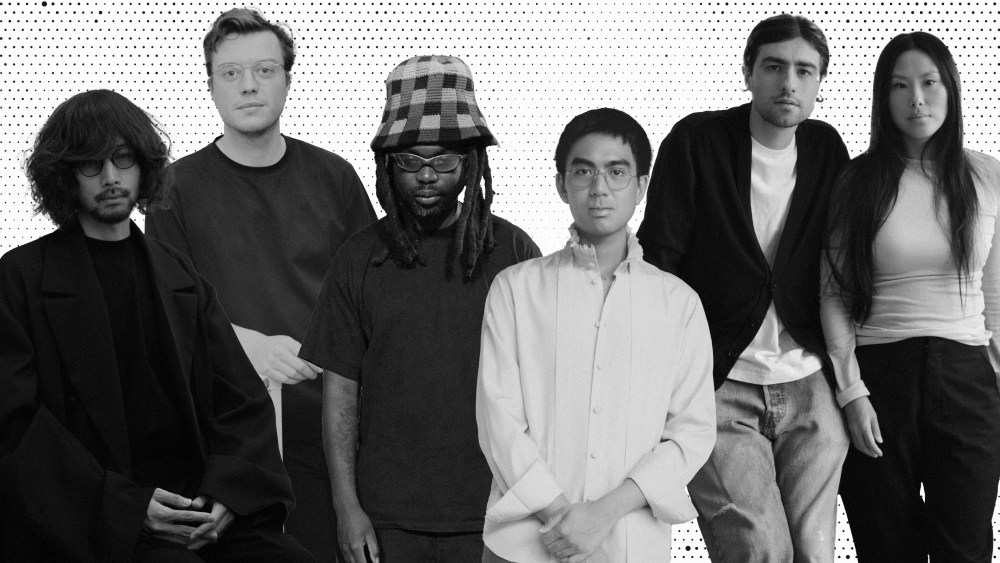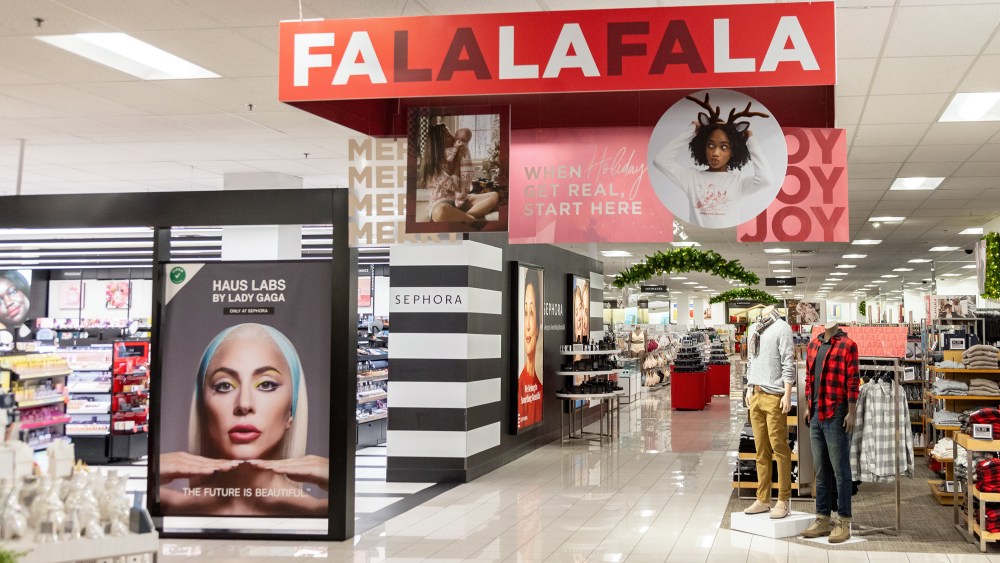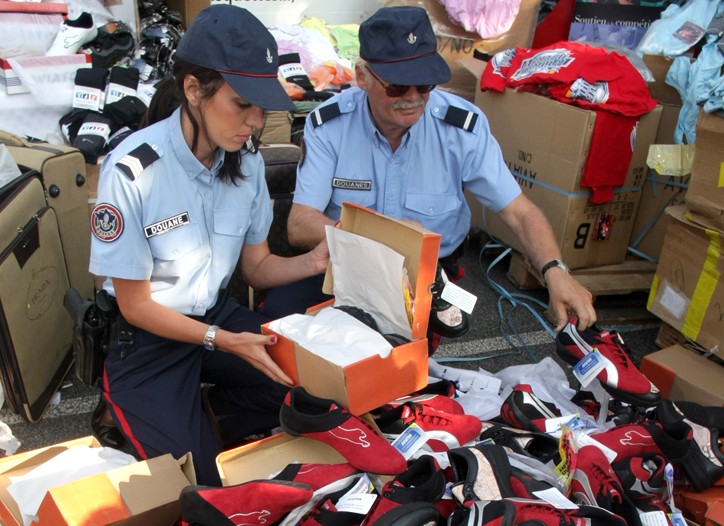PARIS — Showing how perfect the imperfection of handwork and process can be, a laboratory to showcase Brazil’s vibrant culture and a creative potential that’s not fully tapped yet, a designer’s love for textile and a multihyphenate creative’s latest project are among the ideas that new names in Paris are bringing to the men’s spring 2026 collections.
Camiel Fortgens

Hold that needle and thread! If you find a button missing from one of Camiel Fortgens’ garments, that’s likely completely intentional.
“It’s a really fine line of what’s nice and not nice,” the designer said ahead of his inaugural on-schedule Paris presentation. “Within the imperfectness, some interpretations will be that they will be imperfect on purpose — perfectly so.”
You May Also Like
But try telling that to factories, who initially tried to fix seams left raw or other details usually seen as flaws.
For the Dutch designer, who launched his Amsterdam-based label in 2014 and was awarded Netherland’s Culture Fund Fashion Stipend last year, fashion isn’t about flat, finished entities.
He views it as a continuous, evolving process of creation where clothes are “living entities,” he said. “A garment shouldn’t be a flat finished product; it should still be a bit alive.”
Plus mistakes — or shortcuts, like not changing a thread’s color for the sake of saving a few minutes while racing to finish on time — show there were human hands in the process.
Fortgens began his creative journey at 14 as a teenager into hip-hop and sneakers who would design clothing during his holidays. After high school, fashion school didn’t appeal as it “felt a bit claustrophobic.” Instead, he enrolled at the Design Academy Eindhoven.
“I felt such a sense of freedom to really walk my own path and do all the things I wanted and see where that ended up,” he said. Yet after trying his hand at ceramics, industrial design and architecture, that led him right back to fashion in his final year.
“But I didn’t know anything about clothes,” he recalled. “I made a flat collection because I couldn’t make patterns…basically what you would draw as a kid, two layers on top of each other [that] created a clash with the [volumes] of the body.”
The result was rave reviews and an invitation to present during Amsterdam Fashion Week.
Fast-forward to 2025 and he’s built a solid following of around 60 retailers worldwide, with the U.S. accounting for over a third of the business. Japan and South Korea are also important markets for the brand.
Retail prices start around 200 euros for jerseys and go up to 2,000 euros for leather jackets. Shirts are between 300 and 400 euros, jackets in the 500-to-1,000-euro range and trousers are around 400 euros.
For spring 2026, he’ll be showing a collection that taps into “vintage Americana archetype clothing that have had some sort of interaction with the sun or heat.”
Jah Jah

“It’s crazy to go from delivering food to a showroom to expressing my DNA and having Adrian Joffe trust in me when I’m not even from fashion,” Daquisiline Gomis told WWD before the first off-schedule Jah Jah show at Dover Street Market Paris on Tuesday.
“But I believe each of us has something to defend and say, so that’s what moves us forward,” he continued.
And in his case, it made the opportunity to make his mark on fashion come twice.
Around four years ago, the Paris-based multihyphenate entrepreneur of Bissau-Guinean descent met Virgil Abloh when the then-creative director of Louis Vuitton’s menswear came to Le Tricycle, the Afro-vegan restaurant Gomis opened with his partner, Coralie Jouhier, a decade ago.
At the time, Gomis was also heading Béni Original, a tailoring-centric fashion label he initiated which paid homage to the elegance of the clothes West African men wore in the 1970s, which he’d witnessed on his father and uncles.
Tentative conversations around collaboration were curtailed by Abloh’s untimely passing.
Shortly after, Gomis shuttered the clothing line to focus once more on the restaurant and a hybrid space blending culture, food and the growing community that coalesced around him. That’s when he went on a vegan fare delivery to the Dover Street Market Paris showroom, where he met Adrian Joffe.
Long story short, the conversation started with T-shirts for Dover Street Market Paris’ opening, segued into a collaboration with Comme des Garçons Shirt and now, an inaugural off-schedule show for Jah Jah, which is now morphing into a full-fledged fashion line.
For all his projects, which also include a hiking club, the self-taught designer had an epiphany.
“All these things had different names but came from the same seed — pan-Africanism, Rastafarianism and my culture,” he said. “I wanted to start telling our story by [myself] because it’s often told by other people.”
Cue his inaugural lineup, which gave a taste of Gomis’ blend of cultural celebration, eye for cuts as well as collaborations with CdG Shirt and Adidas.
Among the standouts were sharply executed hybrids where color-filled checks brought volume to menswear classics; roomy shorts with horizontal pintucks that subtly shaped them.
There were also outfits that spoke of handcraft and teasing the new out of reclaimed shreds, exemplified in a long A-line dress cut from a camouflage-like fabric that revealed intricately assembled strips of utility fabric and plaid on close inspection.
Woven in were the colors of Burkina Faso’s flag; “Jah,” the term used by Rastafari to refer to God or a higher spiritual power, and a portrait of Burkinabè politician Thomas Sankara, who gave the country its current moniker that means “land of upright people.”
“Deconstructing the colonial past that was imposed on us to rebuild, take back our codes and have our own vision inspired what was done before — our ancestors — really inspired me,” he said.
In the pricing of this line which will be produced between Paris, Portugal and Italy, Gomis plans to be a bridge between the worlds of streetwear kids and high fashion. Before his show, he placed his brand between the likes of Carhartt’s premium offerings and Comme des Garçons territory.
P_Andrade

Founded four years ago as a “laboratory for innovation, technology, and sustainability,” P_Andrade is the brainchild of husband-and-wife designer duo Paula Kim, a Central Saint Martins graduate who launched sustainable women’s brand Lapô, and Pedro Andrade, who is already behind 13-year-old streetwear label Piet.
Or as Andrade, an industrial designer who trained at Brazil’s Senac Arts University in São Paulo, put it, “Piet is me before 30 and P_Andrade is me in my 30s.”
Woven into the brand is a focus on circular design and their deep interest in the regenerative economy. It also has collaborations with Veja and Asics.
Expect curvaceous shirts, smartly cut trousers and jackets with collars tweaked just so where the real novelty can’t be seen with the naked eye. They’ve been tapping leading-edge technologies like yarns that can be traced through the blockchain across the entire supply chain but also bacteria-based dyeing processes. Purple is among the colors they’ve managed to tease out of microorganisms.
For spring 2026, Kim and Andrade looked to life’s micro-dimensions and translated “different layers of life, starting with bacteria, microorganisms, and fungus” in a collection playing on contrasts of scale between, say, tops and bottoms.
There’s another contrast at play. “On one side, we have super high technology, and on the other, we’re working with communities from the Amazonian forest,” said Andrade. “It’s crazy to see how beautiful the mix of these two different worlds is.”
Embroidery using Brazilian stones and a latex lace made of natural rubber sourced from small local suppliers will feature in the lineup, as will a collaboration with musical artist Samuel de Saboia.
With some 60 stockists worldwide, including 30 in China, which accounts for around 30 percent of the business, the brand is looking to expand its footprint to Europe. Its designs retail from around 200 euros for a T-shirt and up to 1,000 euros for jackets.
But there’s another mission the cofounders have set out: showing what Brazil can contribute to the global creative industry.
“We are so much more than a tropical country with a lot of parties and a carnival,” said Andrade. “We want to show the world how powerful our culture and resources are.”
Shone Puipia

When it comes to fashion, Bangkok-based Shone Puipia had to work his way up — from shoes to clothes, that is.
Throughout his bachelor’s and master’s degrees at the Royal Academy of Fine Arts in Antwerp, the designer would always imagine the footwear that supported his fashions, diving deeper into shoemaking craft with a course at Milan’s reputed Arsutoria School. After his 2018 graduation, he went on to found Adult Antwerp with friend and fellow RAA graduate Raphaële Lenseigne.
These days — although his eponymous label, which he concentrated on after returning to Bangkok, does offer the kind of sculptural heel he continues to love — it’s another limb he’s interested in: the hand, or rather what it can craft.
And it’s nowhere more evident than in his spring 2026 collection, where he wanted to take a painterly approach to garments in a deeply personal narrative that is about “elements of the hand, one way or another,” he said.
Rife with subtle frayed edges, hand-knotted balls and soft volumes that showcase his knack for patternmaking, the collection also taps the work of three Thai artists.
They are his father, renowned contemporary painter Chatchai Puipia, who hand-painted canvas panels and imagined buttons seen in the collection; his mother, acclaimed conceptual artist Pinaree Sanpitak, whose work addresses womanhood and the self; and photographer Dham Srifuengfung, with whom the designer experiment with screen printing that showcases “a handmade quality.”
Over the past eight years Puipia has built a brand that parlays his love for textiles with a lush hand and eye for rich detailing into upscale collections filled with soft volumes and flattering cuts.
Priced between 300 and 1,500 euros, the collections are produced in Bangkok by Puipia and his team of six on a mostly made-to-order basis. The bulk of sales are womenswear, with menswear a niche but growing segment.
Among his bestselling designs are shirts, with one variation featuring a cravat collar and another coming with expansive bishop sleeves.
Coming to Paris is less about building up wholesale business than it is about connecting to those “looking for something different, unique but rooted in things made by hand — artisanal fabrics, high-quality craftsmanship,” he said. “They have an appreciation for crafts, for the little things in their clothes which maybe only they would know how special they are.”
Ssstein

What is paramount for Ssstein founder Kiichiro Asakawa is that “customers feel happy and good when wearing his collections,” he told WWD through a translator.
And the most challenging item to find this sensation in? Trousers.
It’s the frustration at a lack of perfectly fitting ones that led this graduate of Tokyo Gakugei University with a specialty in education to launch his own line.
While working at now-shuttered multibrand store Naichichi, Asakawa learned garment construction by taking apart vintage clothing. When it closed in 2016, he then opened his own boutique in the Japanese capital’s Shibuya neighborhood.
Among the first things on offer were custom pieces he crafted out of vintage Levi’s jeans and soon enough, a fledgling line of three trouser models he deemed to be “the perfect cut.”
It grew into a full offering initially christened “Stein.” As the German word for stone was often used as a suffix in family names such as Einstein, and traced back to ideas of strong foundations, heritage and durability, the designer felt it was an apt moniker for a line that’s all about handsome staples. Additional Ss were later added to evoke worlds like silence and simplicity, which Asakawa feels match the brand’s spirit.
Reworked through a singular focus on subtly architectured patterns executed in lush, mostly natural, textiles with plenty of nigh-on-invisible details — doing away with visible fastenings, for one — that get sartorial enthusiasts hot under the collar, Ssstein pieces have attracted retailers that include Ssense, H.Lorenzo, Berlin-based Andreas Murkudis, L’Éclaireur, Printemps and Antonioli. The brand is a regular at Rakuten Fashion Week Tokyo.
Prices average just under 500 euros for trousers and 460 euros for shirts. Knitwear sits between 420 and 500 euros, while blousons and outerwear start around 650 euros and go up to four figures. A reversible cashmere-wool stole coat currently available retails for 1,880 euros.
After his 2025 Fashion Prize of Tokyo win, Asakawa felt showing in Paris would help to further build bridges between his unisex wares and “people [who] can simply appreciate beautiful things,” a cohort that could soon include women.
For Ssstein’s sophomore off-schedule Paris show, the designer will be expanding his repertoire of everyday elegance and unfussy tailoring with knitwear in tones of soft blue, red and yellows. But expect these to be used like watercolor washes across silhouettes thanks to fine gauge cashmere or fuzzy alpaca, materials the designer chose for their cloud-soft textures.



